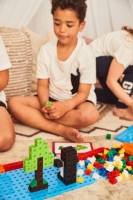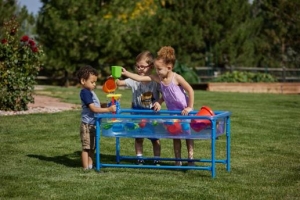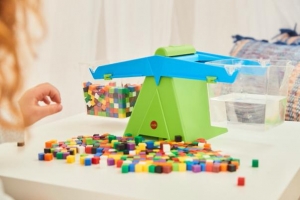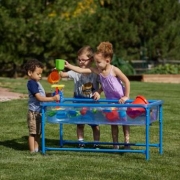Early Math Experiences For All Children
Children love to play in the early years it is a great way to introduce math in a way that they understand and can relate too. Many caregivers are concerned that their children need formal lessons for math in the early years. However, through play-based activities children will have positive experiences which will set them up for the core foundation skills.
‘Mathematics (maths) is an important part of learning for all children in the early years and receiving a good grounding in maths is an essential life skill. As well as numeracy, it helps skills such as problem solving, understanding, using shapes and measure and developing their own spatial awareness.’
Here are 5 examples of fun and engaging ways to introduce math experiences for children 3 years to 8 years in your home or early years setting with educational toys.
Build it, fix it, design it – Number

Most early years settings will have linking or construction cubes. Let’s build the tallest tree, the largest penguin or the smallest ant, straight away we are using math terms that children can learn from.
If we separate the colours and see how many we have of each colour we can introduce counting.
Treasure Hunt – Numbers
Depending on the group’s sizes we can introduce a treasure hunt with a map, on this map we will have pictures and numbers. Then in groups/pairs, let’s go and find the treasures on the map.
If we have the outdoor area we may have 2 leaves, 3 stones, 4 small sticks, 1 flower. This way children can find their treasures and bring them back to discuss in a group looking at the different sticks, stones, leaves, how many can the class find, which stick is the smallest/largest. There are so many ways to incorporate numbers into a fun activity.
Find the number – Numbers

Children love to get messy so a great game is to hide the numbers in the sand & water tray. They will then find the numbers and discuss them with their friends.
If you also hide dinosaur counters in the tray they can match the counters to the numbers.
How tall are you? – Measurement
Children can lay on the ground and have a grownup or peer draw with chalk their shadow on the ground. Each child then can measure how tall is their shadow with their hands, how many hands or even use linking cubes long is my shadow.
½ full ½ empty – Balance

When setting up a sensory play activity it is great to have a bucket balance available for children to experiment with.
Fill ½ with solid material and the other with liquid, can we make it balanced, does it weigh the same?
Which side is heavier, how can we make it balance? Is it ½ full or ½ empty, there are so many learning and discussion points for children and caregivers.
Sign up for monthly newsletters to hear about all the new free downloadable resources available videos and play blog. Let’s play, learn & create with Edx Education toys to create lifelong learners.
By Heather Welch, International Brand Manager, Edx Education



